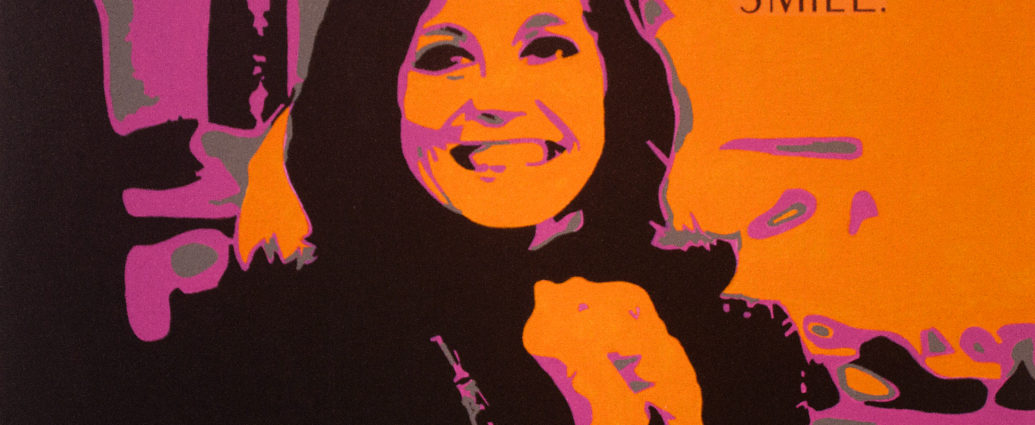119 North Weatherly is the gallery that makes you look at art differently.
WORDS BY KATIE DOHMAN
Amanda Wirig is ready for an art-scene reinvention. After twenty years as a visual artist, musician, and nonprofit arts administrator, she wants to level the playing field for artists, and create more herself, too.
After COVID effectively ended her job in Mankato, where she was “scheduling performances and gallery stuff,” she realized she was free to go wherever her heart took her.
That ended up being an artist’s loft in Minneapolis, where she began reimagining her career. Her background in nonprofit management and galleries had always implied a nonprofit brick-and-mortar gallery work was the only way, but COVID changed all that. She had been using software to mock up what her artwork would look like in a client’s home, and she noticed that virtual galleries were working in Chicago and San Francisco. She decided: There’s no going back to where we were before COVID.
“Even if the arts got us through COVID and George Floyd and how we survived and maintained any sense of sanity….things have changed permanently,” she says. “But in some ways it has made things more accessible, in terms of disability, economics, a lot of things.”
So in November of 2022, she launched 119 North Weatherly, a virtual gallery. She notes that she’d been hindered herself from exhibition opportunities because the economic hurdles were simply too high. “You end up losing money – shipping your work to and from the gallery, paying to have someone look at images. I wanted to make things more fair because I know how hard to making a living in the arts. It’s tough,” she says. She realized if she opened a gallery virtually, she could charge a little to pay herself for her time and the website, but could “keep it super cheap.” Artists keep 100 percent of their sales.
Not that she faults gallery owners: It’s a tough business, and one that that many people outside it don’t understand. But using a virtual option gives artists a leg up: More opportunities for exposure to the public, clearing a larger profit margin, involving them in the promotion of their work, and community building.
Removing the velvet rope has also intrigued the gallery-shy: Logging in and scrolling around offers the opportunity to see paintings super up-close and personal without any implied pressures, and an easy click-to-buy for accessibly priced artwork.
“A lot of people looking at it—who aren’t normally the type to be that excited about visual art—are telling me how they loved the experience wandering around the gallery, enjoyed the variety of the artwork, and seeing how controls work,” she says.
“There is nothing like experiencing art collectively with a group of people and the virtual experience is never going to recreate that,” she adds. “We definitely need that, too. But you can be snowed in and still walk around a gallery. You can zoom in and get up close on the virtual wall and see texture. And you can get exposed to a wider variety of artists, and there’s definitely something to be said for that. I would never want physical galleries to go away, but the virtual gallery has merit.”
It’s also helped create community, even without the undeniable powerful collective experience: Artists are finding each other through these exhibitions and supporting each other in their artistic endeavors now, too.
Plus, Wirig is finding she doesn’t have to sacrifice her own time in the studio making art because she’s shed the upkeep and work that comes with a brick-and-mortar gallery. “I went on a residency last October to Paris, Tennessee and spent a week making art at a farmhouse with another artist friend of mine. It really drove home this is what I’m here for, what I’m good at, what I’m meant to do. Having that dedicated time to only focus on art—I needed that so badly. My soul needed that.
“Being an artist in any capacity is super hard but one of the things I’m so grateful we have is the ability to think outside the box and come up with creative ideas, and we’re not afraid of change. We may not like it, but we adapt to it,” she continues. “But, at the same time, with Minneapolis-St. Paul wanting to tout being so arts friendly, everyone needs to remember the artists cannot do this by ourselves. The public has to put the money where their mouth is. You need to buy art, go to performances, buy a poetry book, actually support these things you say are important to you. And that’s the hard part.
“If the public does not support the artist, the artist will leave,” she adds. “If there is no studio space, or you can’t book gigs or shows, the artist will go to a different city that has that. I don’t think people realize that. Artists have to be able to eat, too. They have to be able to pay rent. So if having them as part of the culture and economy here is so important, you have to make sure they can stay.”
And what about the influence of the aforementioned Moore? “This woman has been a fairy godmother in my life, showing me the ropes,” Wirig says. “I live 10 minutes from that house [on Kenwood Parkway, which had the fictional address 119 North Weatherly]. Someone like me wouldn’t be doing what I am doing if she didn’t pave the way. I’m doing what I’m doing because she came first.”
WHEN YOU GO
The current exhibition runs through February 28, and a call for the next exhibition, which launches March 7, ends February 28 as well.
Find the gallery at 119northweatherly.com
Find Wirig’s work at amandawirig.com

